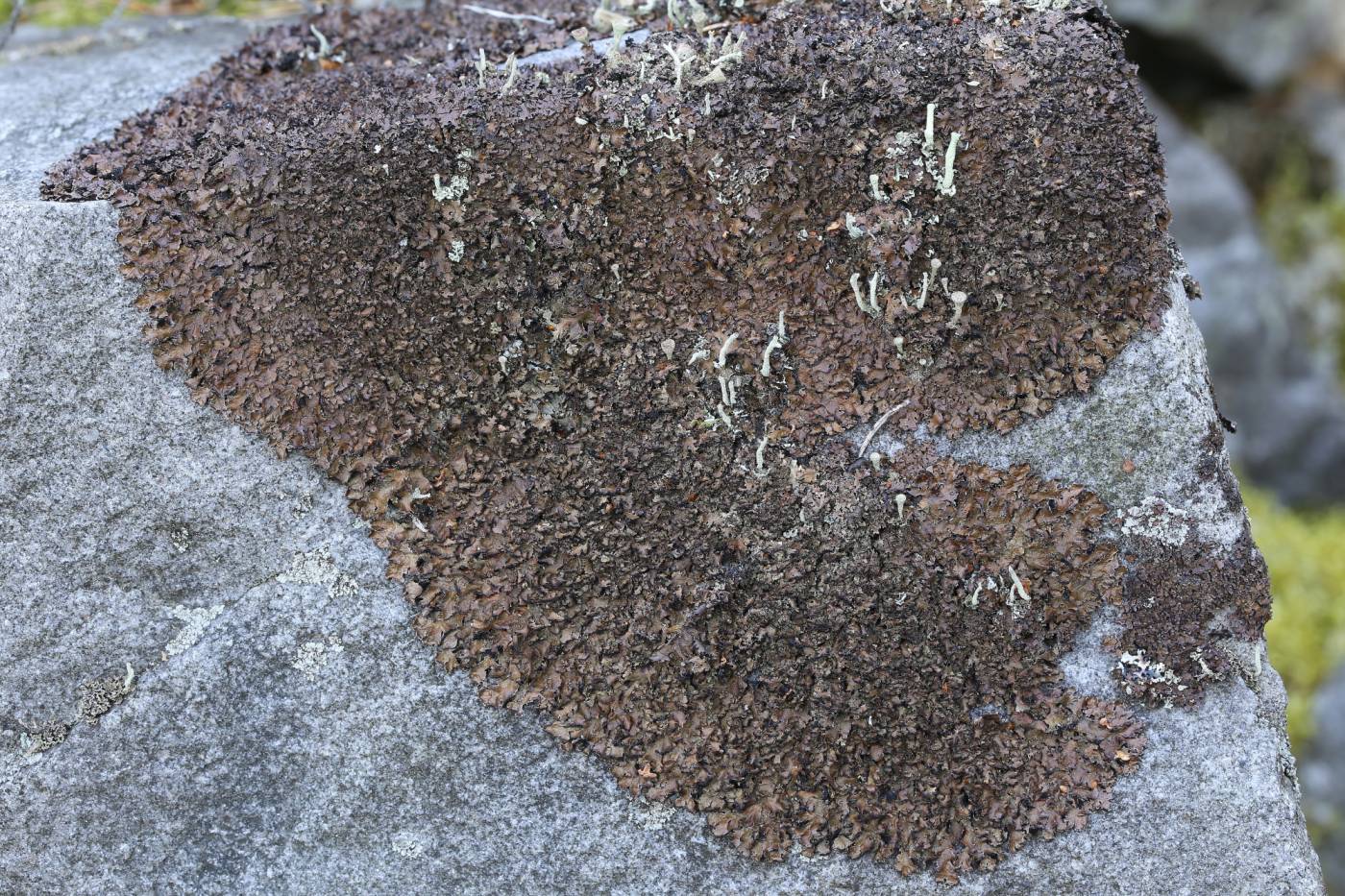A taxon in the past often included under P. omphalodes, from which it differs mainly in the content of protocetraric acid in contrast to the salazinic acid contained in P. omphalodes s. str. The species is known only in Europe so far. Alike other members of the group around P. omphalodes, P. discordans grows on siliceous rocks and screes. It prefers areas rich in precipitations. In northern Europe, the lichen occurs mainly along the coast and in central Europe mainly in mountains. According to the current knowledge, it is not a separated phylogenetic lineage but rather a chemotype of P. omphalodes (Ossowska et al. 2019). The recognition of this taxa at the species level is therefore doubtful and will be the subject of detailed molecular studies. The distribution of P. discordans in the Czech Republic is poorly known; it has been reported, for example, from the Brdy Hills.
Literature: Ossowska E., Guzow-Krzemińska B., Kolanowska M., Szczepańska K., Kukwa M. (2019): Morphology and secondary chemistry in species recognition of Parmelia omphalodes group – evidence from molecular data with notes on the ecological niche modelling and genetic variability of photobionts. – MycoKeys 61: 39–74.
taxonomic classification:Ascomycota → Lecanoromycetes → Lecanorales → Parmeliaceae → Parmelia
Red List (Liška & Palice 2010):DD – data deficient
Red List (Malíček 2023):C2 – strongly endangered
Occurrence in the Czech Republic
All records: 13, confirmed 13. One click on a selected square displays particular record(s), including their source(s).
